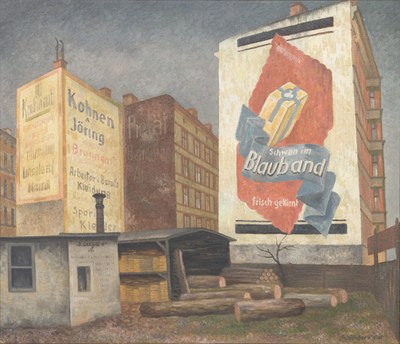Joe Bucciero // New Objectives: German Painting and Organized Capitalism, 1923–1929
In my dissertation, New Objectives: German Painting and Organized Capitalism, 1923–1929, I consider the painting of the Neue Sachlichkeit—and the broader so-called “return” to representation in 1920s Germany—as more a technical response than a formal or political reaction to work’s (art) historical conditions. The artists at the center of my study continued to paint, in part, to stake a clear, nonalienated position within an artistic and social terrain the boundaries of which kept shifting, mostly to accommodate the techniques or requirements of organized capitalism.  Reading artwork by Carl
Reading artwork by Carl
Grossberg, Grethe Jürgens, Lotte Laserstein, Anton Räderscheidt, Wilhelm Schnarrenberger, Georg Scholz, Karl Vôlker, and Gustav Wunderwald, among others, I hope to both destabilize and add texture to categories that have structured the discourse and practice of Western art history in the
past century. In short, what delineates apparently polar terms like progressive and conservative art, deskilling and craft, manual and intellectual labor, abstraction and figuration—and how did these delineations shape painting in Weimar-era Germany? How, too, did the painters help to delineate?
[Caption: Gustav Wunderwald, AmWedding, 1927]
